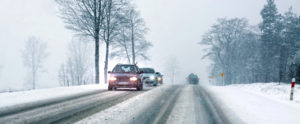 If the snow &/or ice is heavy or threatening to become heavy, don’t go out. It is not worth the risk. Cancel, change plans, make due. If you must go out, keep the trip as short as possible, and follow these guidelines.
If the snow &/or ice is heavy or threatening to become heavy, don’t go out. It is not worth the risk. Cancel, change plans, make due. If you must go out, keep the trip as short as possible, and follow these guidelines.
When there is snow &/or ice on the street:
1. If your car has been outside, warm up the car and clean the snow & ice off all windows, windshields, and hood using a brush & scraper (make sure your headlights and brake lights are snow free). Do not warm up a car in a closed garage.
2. Go more slowly than usual, and leave more time than you normally would to get where you’re going.
3. Keep a safe distance between you and the vehicle(s) ahead of you. Safe distance in snow is double the normal distance.
4. Turn your headlights on if it is snowing (and any time you use your windshield wipers). In heavy snow, fog lights might also be helpful (but not all cars have them).
5. Don’t make sudden or jerky movements with steering, and don’t accelerate or brake forcefully. This can cause you to slide and lose control.
6. If you start to slide or skid, take your foot off the gas pedal and keep steering & looking where you want to go. When you are headed the right way again and feel some traction, accelerate slowly (or brake slowly). If your wheels start to spin, take your foot off the gas pedal until you feel the tires grab again.
7. When you break, push the break gently. If you have anti-lock brakes, you will hear a thumping sound which is normal (it is the way the car prevents the brakes from locking up and making the situation worse). If you have regular brakes, pump them slowly, keeping your heel on the floor and the ball of your foot on the brake pedal (this helps you to be gentler because you are using only your foot, not your whole leg).
8. If you need to get out of a parking space with a lot of snow, you might need to “rock” the car, going forward a little, then back a little, over and over. Keep the wheels fairly straight, with only slight movements left or right. It is really difficult to get over snow when the wheels are turned hard to the left or right. If that doesn’t work, you may need to either shovel the snow out of the way or put down sand, kitty litter or gravel to get traction (some families keep a bag of this in the trunk).
9. Keep your gas tank at least ¼ full so that the gas line doesn’t freeze (if extra moisture gets in the line), and keep your windshield wiper fluid 1/2 full or more. You don’t want to run out of wiper fluid in the middle of the road with trucks spewing dirty slush onto your windshield.
10. Never use the cruise control in snow, ice or rain. It can cause the car to hydroplane and you could lose control.
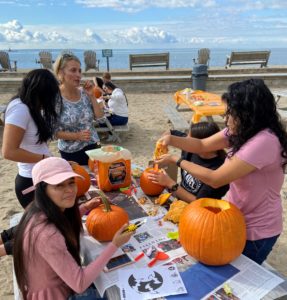
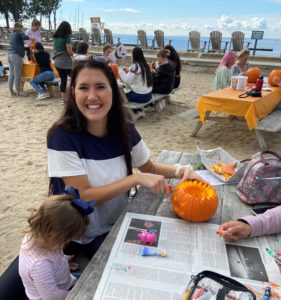
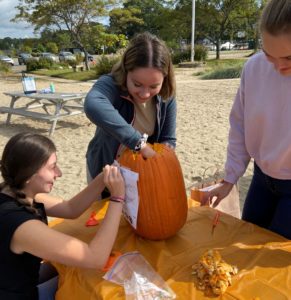



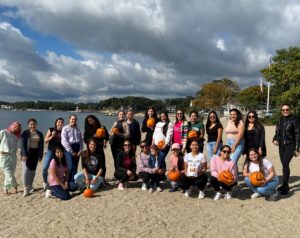

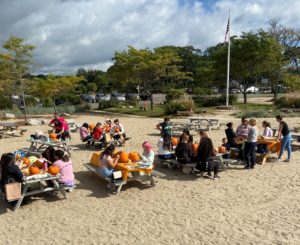


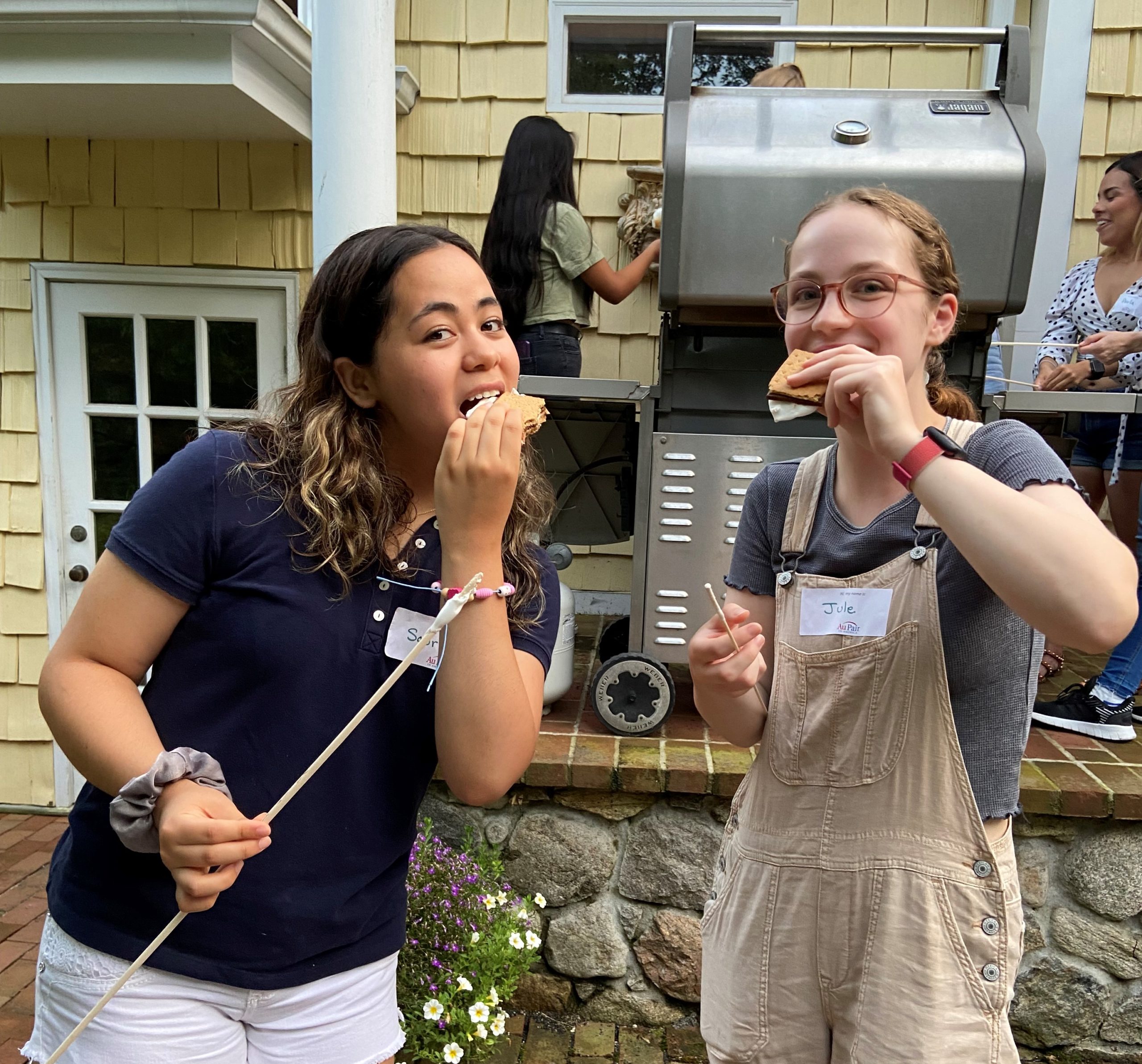





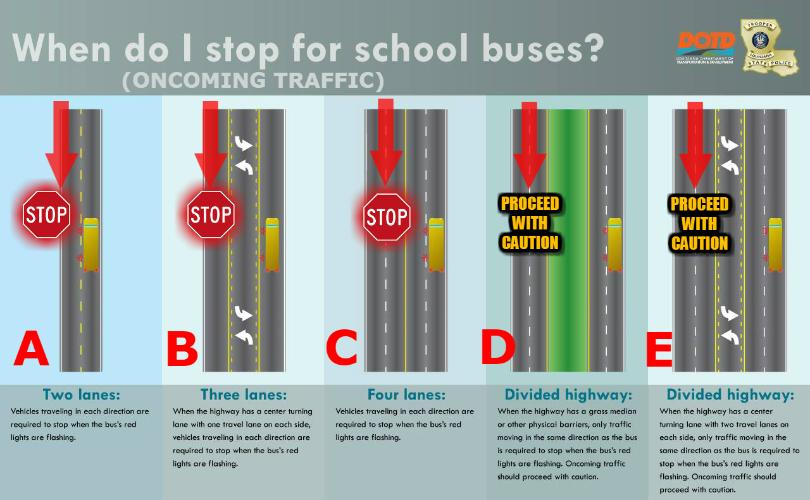

 In September, Staying Put in New Canaan asked for help decorating face masks to be included in food baskets being delivered as part of it’s Celebration of Generations virtual luncheon. Au pairs in New Canaan volunteered to decorate 60 of the white cotton masks. An international group from Brazil, the Czech Republic, Peru, New Zealand, Germany, Colombia, Latvia, South Africa and Poland participated.
In September, Staying Put in New Canaan asked for help decorating face masks to be included in food baskets being delivered as part of it’s Celebration of Generations virtual luncheon. Au pairs in New Canaan volunteered to decorate 60 of the white cotton masks. An international group from Brazil, the Czech Republic, Peru, New Zealand, Germany, Colombia, Latvia, South Africa and Poland participated.
 If the snow &/or ice is heavy or threatening to become heavy, don’t go out. It is not worth the risk. Cancel, change plans, make due. If you must go out, keep the trip as short as possible, and follow these guidelines.
If the snow &/or ice is heavy or threatening to become heavy, don’t go out. It is not worth the risk. Cancel, change plans, make due. If you must go out, keep the trip as short as possible, and follow these guidelines.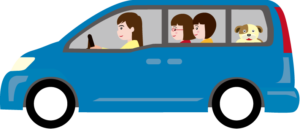 Driving with kids in the car can be particularly distracting especially if there is crying, whining, or some other issue that warrants attention. It is hard to ignore children who want attention, but when you are driving you need to remain focused on DRIVING!
Driving with kids in the car can be particularly distracting especially if there is crying, whining, or some other issue that warrants attention. It is hard to ignore children who want attention, but when you are driving you need to remain focused on DRIVING!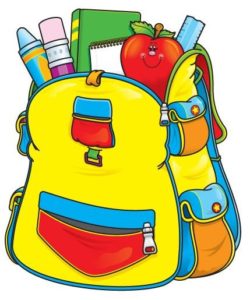
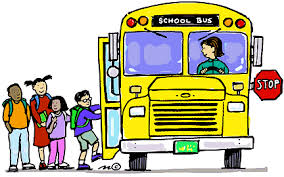






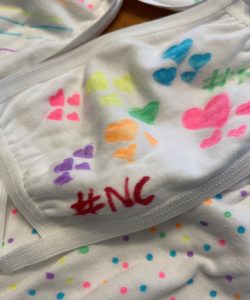
 It’s important to have effective morning routines so children get off to school without stress. Older children can help plan their routines.
It’s important to have effective morning routines so children get off to school without stress. Older children can help plan their routines.